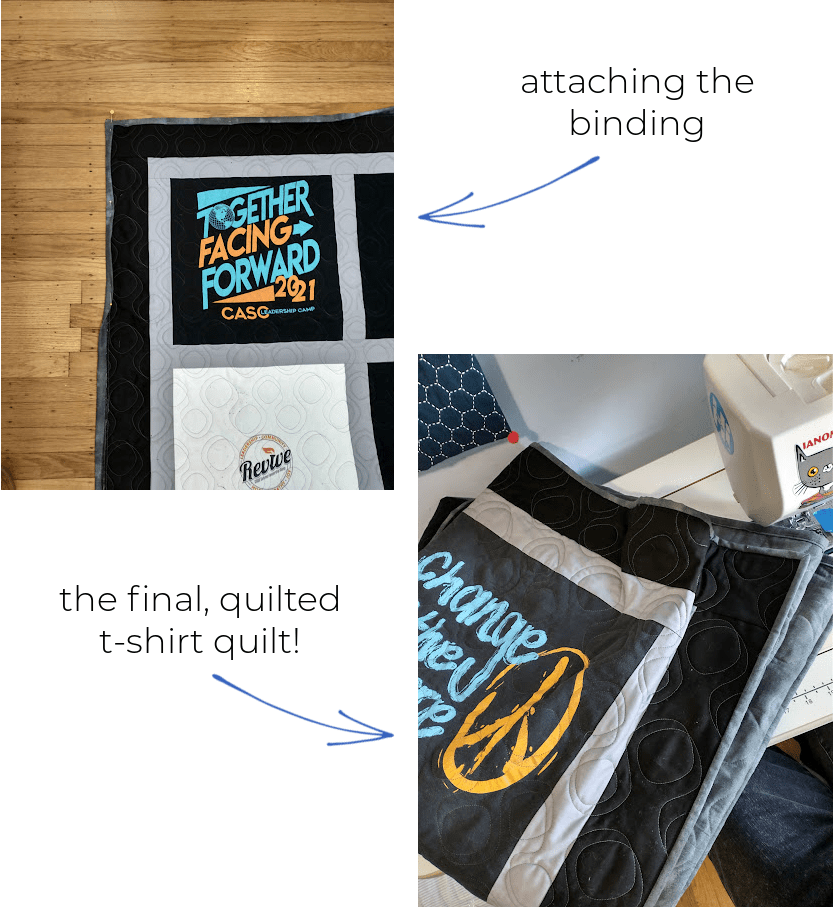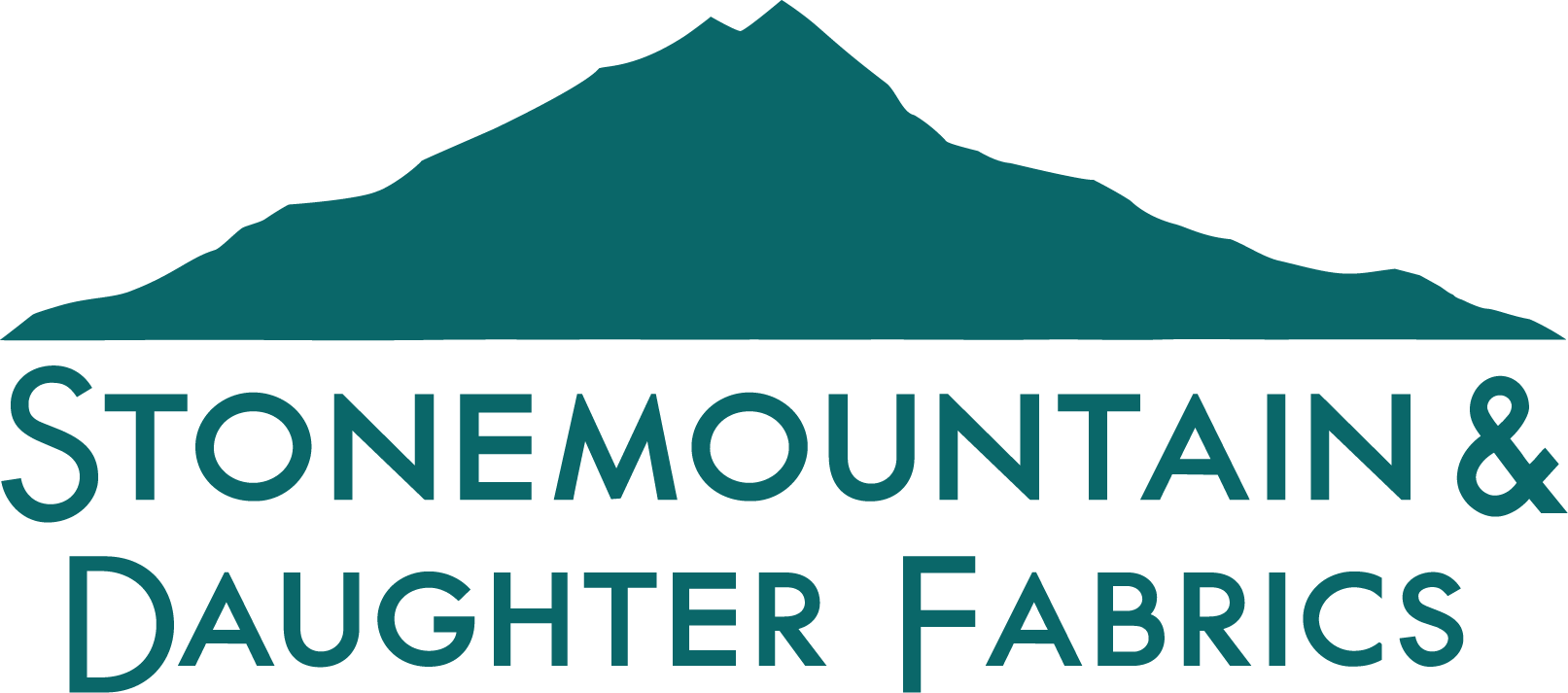Whether you’re sending an athlete off to college, celebrating years of collecting Grateful Dead t-shirts on tour, reimagining a stash of baby clothes, or memorializing a loved one, making a t-shirt quilt is a great way to keep memories close by. Since summer is the perfect time to start a big project, we’re here to share our pointers for quilt-makers who want to explore working with these textiles. Special thanks to Kristen, our in-house quilting expert, who shared her best advice for making quilts out of t-shirts and other keepsakes!

Wash and dry your t-shirts before you start. Ironing will set any existing stains, so make sure all of your materials are clean and stain-free. If your shirts have been in storage for a while, laundering them will freshen them up, fluff up the fibers, and free stubborn wrinkles.
Iron with a pressing cloth to prevent damaging t-shirt graphics. A scrap of muslin or a light-colored quilting cotton is perfect for this, and in a pinch you can even use an old cotton pillow case or tea towel.
Watch out for snaps. If you’re working with baby clothes, be sure to avoid those metal snaps! Snaps can damage your cutting tools and break your sewing machine needle.

Sash with a midtone. Because t-shirt collections can be vast and colorful, Kristen recommends sashing your quilt with a midtone to create visual harmony and tie it all together. If you have a collection of black and white t-shirts, you might choose to sash your quilt with a medium gray quilting cotton. If your quilt contains a variety of colors and patterns, as in the baby clothes quilt, you might choose a medium-intensity color like an aqua for your sashing fabric. Kona Quilting Cotton is a great choice for a light/medium-weight quilting solid that will match the weight of your stabilized t-shirt squares.

Sew with what you know. No special needle or thread are necessary; go ahead and use a universal needle and all-purpose thread to assemble your quilt top.
Thin batting is key. Your stabilized t-shirts and Kona quilting cotton will combine to create a robust, or even bulky, quilt top. Choose a lightweight, low-loft batting like Quilter’s Dream Natural Select to keep your sewing smooth and easy.
Choose a coordinating backing. Backing a quilt with fun quilting cotton is always a great choice! For a warm and cozy alternative, choose a colorful cotton flannel.

How many T-shirts do you need to make a quilt? It is possible to make a quilt with anywhere from 15–40 adult-sized t-shirts, but ultimately it’s up to you! Factors like quilt size, block size, and your block layout will determine how many shirts you will need. We suggest that you first determine the size of the quilt you would like to make, and then you can figure out how best to divide it into squares.
What size squares should I use for my t-shirt quilt? Cutting squares with dimensions of 12 x 12 inches or 15 x 15 inches will work well. Remember that the sewn squares will be ¼ inch to ½ inch smaller on all sides depending on the seam allowance you choose. Depending on how many t-shirts you want to use in your quilt, you may choose to create smaller squares to fit them all.

We’d love to see your finished t-shirt quilt! Tag us #stonemountainfabric on Instagram or email us at [email protected]
